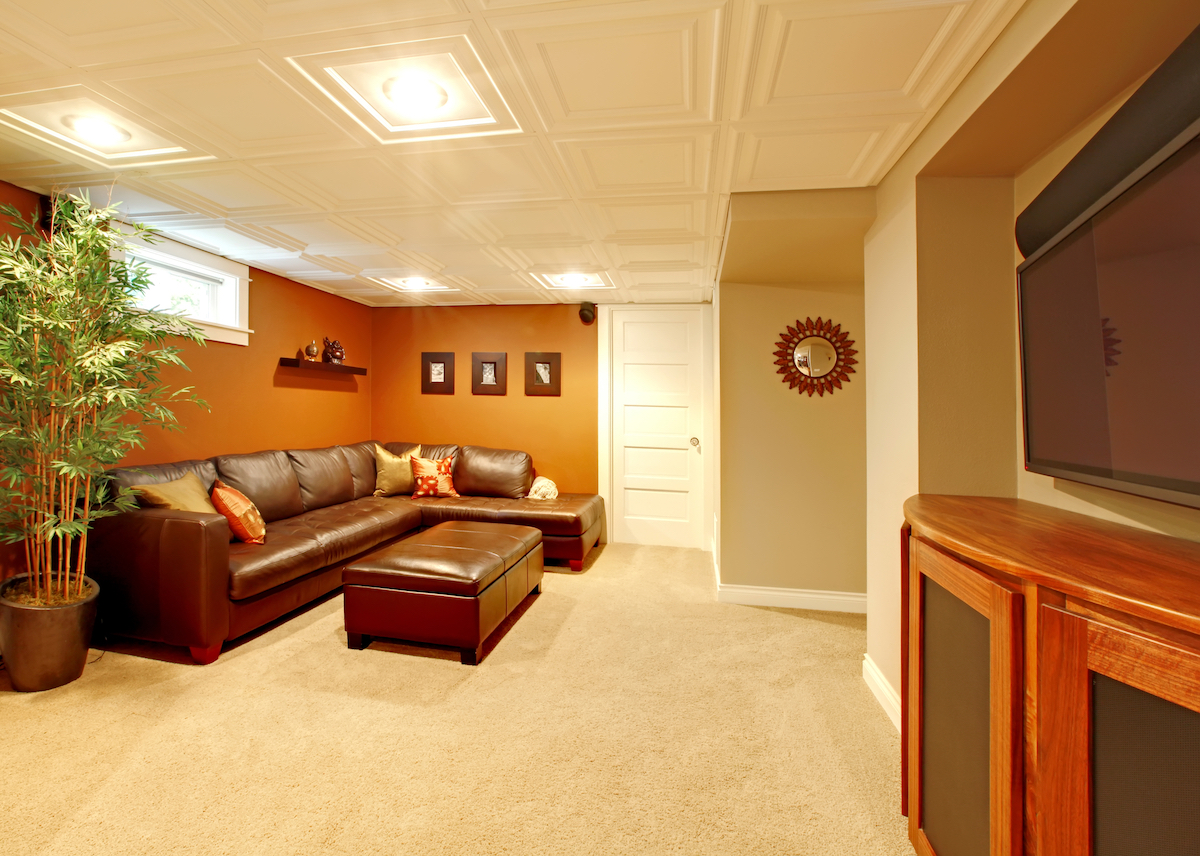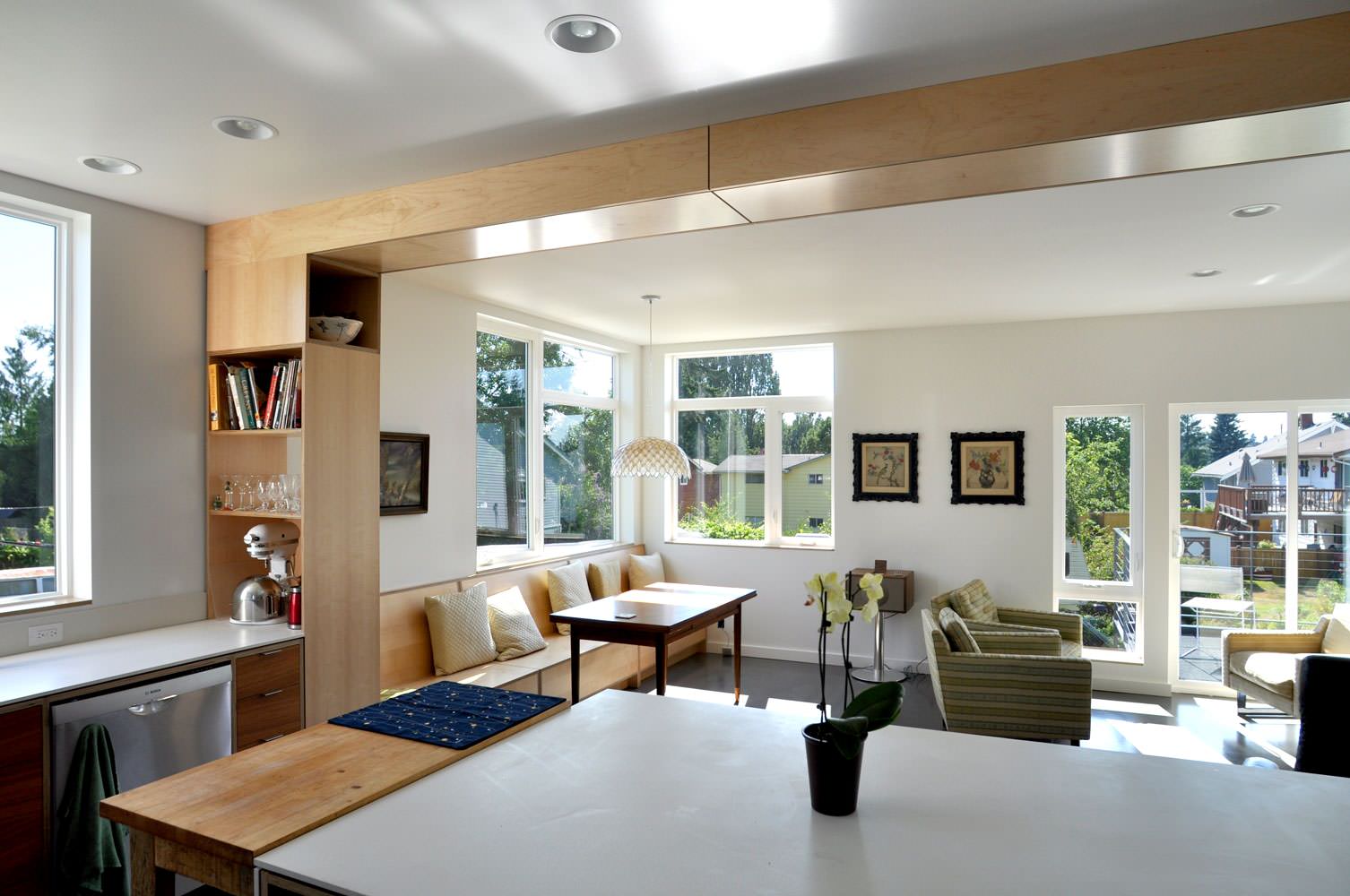Opening Hook
Imagine walking into your basement in Boise, Idaho—where the ceiling is so low that you brush your head on the joists—and noticing a sleek, well-designed backdrop above you instead of exposed ductwork and pipes. That difference, thanks to smart basement ceiling ideas, transforms a cramped, unfinished area into a welcoming space for movie nights or a home gym. In the USA, homeowners are increasingly considering creative ways to finish a basement ceiling without losing precious height while hiding ductwork and other mechanical elements.
Audience Focus
If you’re a homeowner, DIY enthusiast, or home-remodeling contractor based in the USA working on a basement project, this article is for you. Whether your basement serves as a recreation room, guest suite, or simply storage-plus-lounge, you’ll benefit from ideas tailored to low-height basement ceilings, ductwork challenges, and practical finishing methods. We’ll speak in a friendly, down-to-earth way—like chatting with a knowledgeable friend who’s done the job and wants you to succeed.
Why the Basement Ceiling Matters

The ceiling may be the most overlooked element in a basement makeover—but it can dramatically influence how the space feels. A poorly finished ceiling with dangling ducts and wires screams “unfinished storage room.” In contrast, a well-executed ceiling says, “I belong upstairs.”
1. First impression and comfort
A ceiling finished with intention improves the visual height and openness of your basement. For instance, using light paint colors or concealed framing can make low-height basement ceilings feel less cramped. According to design guidance, using a light color on an exposed ceiling helps brighten and open the space.
2. Hiding ductwork and mechanicals
One common frustration is that large metal duct chases are along the ceiling. If left visible, they dominate the space. But you can hide them smartly, without losing all your headroom. As one guide states: “One of the most creative ways to hide vertical duct work is by using soffits or tray ceilings.”
3. Value and usability
A finished basement adds value to your home. According to some home-improvement guides, finishing a basement—including the ceiling—can transform an under-utilized area into a functional living space. Choosing the right ceiling influences maintenance access, comfort (sound insulation, airflow), and aesthetics.
Key Considerations Before You Begin
Before diving into styles and ideas, let’s examine the practicalities—especially for American homes with basements.
Minimum ceiling height & code
Building codes often require a minimum ceiling height for habitable basement space. For example, one permit guideline states: “Finished basements must have a ceiling height of not less than seven feet.” If your basement has low height to start with, you’ll need solutions that minimise further height loss.
Access to ductwork, plumbing & wiring
Even if you hide mechanicals, you’ll still want access for maintenance. As one article notes: “Maintaining access to utilities such as plumbing pipes, electrical wiring, and HVAC ducts can be challenging when you’re finishing a basement ceiling.” Choosing a ceiling system that allows removable panels or access hatches may be wise.
Headroom versus finish-look trade-off
If you have a basement with a low ceiling, dropping it further (for a suspended ceiling or bulkheads) might make the space feel smaller. Some guides specifically call this out relative to hiding ductwork. Lowe s+1 Keep in mind: every inch of ceiling height you lose matters.
Moisture and below-grade environment
Basements are often partially or fully below grade and may face moisture or humidity issues. Choose materials accordingly (for example, moisture-resistant drywall, tile grid systems, etc.). Some guides list drywall ceiling for basements with moisture resistance and proper sealing.
Top Basement Ceiling Ideas for the USA Homeowner
Here we’re going to explore a variety of ceiling finishing options, aligned with your needs: low-height basement ceiling, hiding ductwork, and getting the best look.
Suspended or Drop Ceiling: Practical & Access-Friendly
If your goal is to easily hide ductwork and wires while retaining access, a suspended ceiling (often called a drop ceiling) is a strong option.
What it is and how it works
A suspended ceiling involves a metal grid hung just under the floor joists, with lightweight ceiling tiles dropped into the grid. According to one source: “This type of ceiling consists of a hanging metal frame … Place acoustic ceiling tiles in the suspended frame to finish the ceiling.”
It allows quick access to above-ceiling mechanicals by simply removing a tile.
Pros & cons
Pros:
- Easy access for repairs to ducts, wiring, and plumbing.
- Hides unsightly mechanicals neatly.
- Acoustic tile options can improve sound control.
Cons:
- It drops the ceiling height—you may lose 4-8 inches (or more) depending on grid depth.
- The visual look might feel more utilitarian if you choose low-budget tiles.
Best for
- Basements where access to mechanicals is important (e.g., homeowner wants to retain flexibility).
- Spaces where height is adequate and a functional finish is acceptable.
- DIY friendly and cost-effective.
Tips for installation
- Choose shallow grid systems (there are low-profile options) to conserve headroom.
- Use moisture-resistant or mold-resistant tiles in basements.
- Integrate lighting and diffusers into the grid seamlessly.
- Plan for future access: leave a few removable panels for service zones.
Drywall Ceiling: Polished, Seamless Finish
If you’re aiming for a finished, “main-level” room, look under your basement; drywall ceilings may be the way.
Benefits
As one remodel site explains: “For homeowners who want a finished look that matches the rest of the house, drywall ceilings are the most seamless option.”
It allows you to paint or texture the ceiling just like any other space, integrate recessed lights cleanly, and match your upper-floor aesthetic.
Considerations
- Drywall installation is moderately to highly complex: framing, hanging, taping, sanding, finishing.
- Access is limited: if you drywall over ducts/wiring, future repairs may require cutting into drywall. One DIY commenter noted this risk:
- “Drywall looks highly finished, but I’ve already had to cut into it due to leaks and repairs.”
- It can reduce headroom when you frame below ducts/joists.
Best for
- Basements with sufficient height (closer to or above 8 ft) where you want a high-end look.
- Spaces where you don’t expect frequent mechanical access.
- Those willing to invest more time/money for a polished result.
Tips
- Use 5/8″ drywall if soundproofing or fire rating is relevant; for general use, ½″ may suffice.
- Frame a little below joists if needed to run wiring/plenum, but keep framing minimal to preserve height.
- Consider access hatches or removable panels in strategic zones.
- Paint the ceiling in a light neutral shade to increase perceived height and brightness.
Exposed Ceiling + Paint: Industrial & Headroom-Friendly
If your priority is maximising height and you don’t mind a raw or industrial look, leaving the ceiling exposed but finishing it with paint and treatments can work.
Approach
- Clean and prep exposed joists/ducts.
- Paint everything in a uniform color (for example, all black or all white) so mechanics recede visually.
- Add lighting to create a cohesive look.
One article says: “Old wood surfaces tend to make basements feel smaller… White paint could be your answer if your dark basement needs some brightening.” Another: “A black painted ceiling creates instant drama … making mechanical elements disappear into the shadows.”
Pros & cons
Pros:
- Virtually no height loss (since nothing is dropped).
- Cost-effective and faster to implement.
- It can be very stylish when done intentionally (industrial or modern aesthetic).
Cons:
- Mechanicals remain visible—they’re just less prominent.
- Might not look “finished” to some homeowners (responds to the comment from the DIY forum).
- Access continues to be open, so sound/visual insulation is limited.
Best for
- Low-height basement ceilings where dropping the ceiling is not an option.
- Casual or industrial-style finishes (home gym, creative studio, bar).
- DIYers who prefer speed and budget-friendliness.
Tips
- Choose a paint with good coverage and a flat finish—flat absorbs light and hides imperfections.
- Use track lighting or spotlights to draw eyes away from the ceiling.
- Consider painting the ductwork the same color as the joists to “blend” everything. For example, “Blend with paint” is a recommended method to hide exposed ductwork.
Creative Solutions for Hiding Ductwork When Ceiling Height is Limited
Often, the ceiling height is already limited, and big ducts make things worse. Here are targeted solutions specifically for hiding ductwork while preserving headroom.

Build Soffits or Bulkheads
A soffit is a framed structure that encloses ductwork and allows the rest of the ceiling to remain as high as possible. According to one guide: “One of the most creative ways to hide vertical duct work is by using soffits or tray ceilings.”
Another: “Build a soffit out of drywall or wood … to hide the ductwork.”
How-to tips:
- Frame the soffit close to the duct so you minimise head-loss.
- Keep soffits aligned with walls or corners to make them look intentional, not “afterthought”.
- Use lighting within the soffit (e.g., LED strips) to make it a feature rather than a flaw.
Use Shallow Rectangular “Flat” Ducts
If you’re doing major HVAC work, ask the contractor about using max-height-saving ductwork. One HVAC discussion:
“Open the ceiling and replace the round duct with rectangular ductwork… then build a bulkhead to hide the ductwork.”
This strategy reduces duct height so the ceiling drop is smaller.
Paint or Wrap the Ducts
When you can’t hide them fully, hide them visually:
- Paint the duct and ceiling the same color so they blend. “An easy approach to hiding your exposed ductwork is painting it the same colour as your ceiling to camouflage it.”
- Use decorative treatments—faux wood wrap, metal cladding, or even beam illusions—to make the exposed duct a design element.
Access Panels for Maintenance
If you enclose a ductwork chase or soffit, remember to include access panels or removable doors—so you don’t regret it later when you need to service the HVAC or plumbing.
Style-Driven Ceiling Finishes: Turning Functional into Beautiful
Beyond hiding stuff, the ceiling can contribute a design statement. Here are some style ideas that work along with practical finishing.
Wooden Planks or Faux Beams
Install wood slats or faux wood beams across the ceiling or soffits to add warmth and character. As one source says, “Wood plank ceilings add warmth and texture to a basement, helping to transform it into a more inviting space.”
Use this approach especially in entertainment basements or family spaces.
Coffered or Tray Ceiling
For basements with enough height, coffered ceilings offer a luxe look. “Coffered ceilings can add architectural interest and depth … draw the eye upward and create the illusion of height.”
A caution: They reduce headroom further, so only use if your base height is generous.
Acoustic or Tin Tiles
If acoustic control is a concern (home theatre, music room), drop-in acoustic tile ceilings help with sound absorption. One article: “Acoustic drop ceilings combine visual appeal with sound-dampening benefits … also conceal unsightly ductwork and wiring.”
Alternatively, tin tiles or metal panels add texture and vintage flair.
Paint Everything the Same for a Unified Look
For a minimalist or modern space, painting everything—including exposed joists, ducts, beams—the same color creates a unified canvas. For example: “With a dark color ceiling, you can make mechanical elements disappear into the shadows.”
Low-Height Basement Ceiling Solutions
When you really have limited height—say the finished floor to joist bottom is only 7′ or less—you’ll need extra care.
Minimising Ceiling Drop
- Prioritise framing right at joists or just below, rather than dropping a full inch or more.
- Use shallow grid systems or thin track framing.
- Choose materials that inherently take less space (e.g., ⅝″ drywall instead of build-out).
Visual Tricks to Enhance Height
- Use light colors on walls and ceiling to reflect light and open up the space.
- Use recessed lighting rather than hanging fixtures that intrude downward.
- Avoid lots of bulkheads across the ceiling; keep the plane as flat as feasible.
Prioritise Access in Key Zones
If the height is tight, focus on creating an access path or hatch to major mechanicals, while allowing other areas to be more finished. This balances function + finish.
Checklist: Choosing the Best Ceiling for Your Basement
Here’s a quick reference you can use to decide and plan:
Before you commit, ask:
- What is my finished headroom? Measure floor to the bottom of joists/ducts.
- How much height can I afford to lose? (Drop ceiling, framing, bulkheads).
- What mechanics run overhead? HVAC ducts, plumbing, wiring? Will I need access?
- What is my finish goal? High-end living space vs utility room vs entertainment zone.
- What is my budget and time window? Drywall → more cost/time; exposed/painted → less.
- What style am I aiming for? Modern, rustic, industrial, traditional?
- What are the moisture/insulation/sound requirements? Basements have unique needs.
Implementation checklist:
- Decide on main ceiling type: drop/suspended, drywall, or exposed.
- If hiding ductwork, decide method: soffits/bulkheads + shallow framing OR paint/wrap.
- Lay out lighting and access panels ahead of ceiling construction.
- Choose materials suitable for a basement (moisture-resistant, sound-friendly).
- Finalize color palette, trim, and detail work to match the room’s purpose.
- Ensure code compliance (especially minimum height & fire/sound ratings).
- Install with attention to detail and finishing touches (exposed duct accents, consistent paint finish, clean access).
FAQs (for Featured Snippet Optimization)
Q: What is the best ceiling for basement finishing?
A: It depends on your priorities: If you need access and easy installation, go with a suspended (drop) ceiling. If you want a seamless, high-end look and have enough headroom, drywall is best. If headroom is very limited, an exposed painted ceiling may be ideal.
Q: How can I hide ductwork in a basement ceiling without lowering the height too much?
A: Use shallow bulkheads or soffits built close to the duct line, consider using flatter rectangular ducts, or paint the ducts and ceiling the same color to visually blend them in.
Q: What if my basement ceiling height is low—can I still finish the ceiling well?
A: Yes. Prioritise minimal height loss (shallow framing or exposed ceiling), use light colors to increase perceived height, and choose ceiling finishes that work with lower clearance (painted exposed joists, minimal bulking).
Q: Is drywall a good choice for basement ceilings?
A: Yes, if you want a polished look and have sufficient height and anticipate minimal future access to overhead systems. Keep in mind the cost and reduced access.
Q: Do I need to worry about moisture or codes?
A: Absolutely. Basements may require moisture-resistant materials, proper insulation, and must meet local ceiling-height and fire ratings. One building permit guideline sets the finished ceiling height at not less than 7 ft.
Closing
In summary: choosing the right basement ceiling ideas means balancing headroom, access, style, and budget. Whether you go with a drop ceiling, drywall, or expose and paint the structure, you can make the ceiling a “feature” rather than a compromise. Hiding ductwork smartly—via soffits, painting, or creative framing—lets you reclaim your basement and turn it into a space you enjoy.
Now it’s your turn: measure your basement’s headroom, inspect those ducts, and pick a ceiling strategy that suits your vision. Want to share photos or get feedback on specific materials or colours? I’d love to help. How will your basement ceiling look a year from now—and how will it feel every time you walk into the room?
🏗️ Basement Project Calculator
Latest Post
-
Basement Ceiling Ideas Hide Ductwork Smartly
Opening Hook Imagine walking into your basement in Boise, Idaho—where the ceiling is so low that you brush your head on the joists—and noticing a sleek, well-designed backdrop above you instead of exposed ductwork and pipes. That difference, thanks to smart basement ceiling ideas, transforms a cramped, unfinished area into a welcoming space for movie…
-
أفكار رائعة لأرضيات رخيصة في دبي | أفضل ٢٠ خيارًا
تخيل زوجين شابين في شقة مريحة في مرسى دبي، يخطوان حافيي القدمين على أرضية أنيقة بلمسة خشبية. غرفة المعيشة تتلألأ بضوء مسائي خافت، والأرضية تحتها لا تزال تبدو جديدة تمامًا رغم سنوات من الاستخدام – وكل هذا بميزانية محدودة. هذه هي قوة اختيار أرضيات جميلة ورخيصة في دبي: الأناقة والتوفير في آن واحد. التركيز على…
-
Beautiful Cheap Flooring Ideas in Dubai | Top 20 Picks
Imagine a young couple in a cosy apartment in Dubai Marina, stepping barefoot onto a sleek, wood-look floor. The living room glows with soft evening light, the flooring beneath still looks brand-new despite years of use—and all this on a budget. That’s the power of choosing beautiful, cheap flooring in Dubai: style and savings in…



